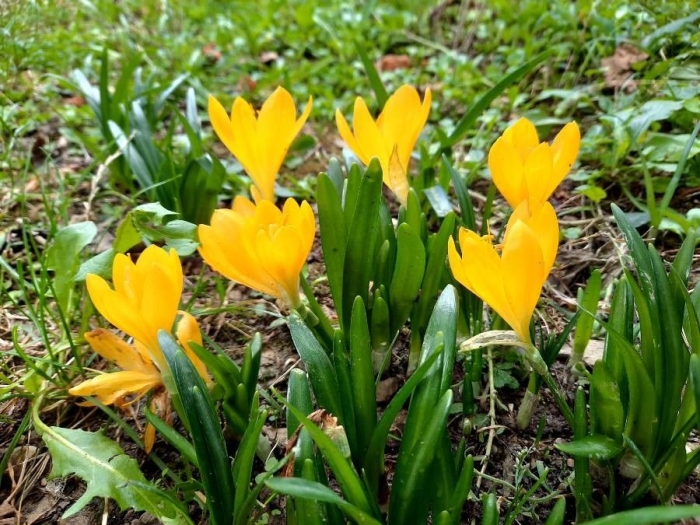Winter Daffodil
(Sternbergia lutea)
Winter Daffodil (Sternbergia lutea)
/
/

coste66
CC BY-SA 4.0
Image By:
coste66
Recorded By:
Copyright:
CC BY-SA 4.0
Copyright Notice:
Photo by: coste66 | License Type: CC BY-SA 4.0 | License URL: https://creativecommons.org/licenses/by-sa/4.0/ | Attribution: coste66 (cc-by-sa) | Rights Holder: coste66 | Publisher: PlantNet | Date Created: 2020-10-04T12:32:42Z | Title: Sternbergia lutea (L.) Ker Gawl. ex Spreng.: flower | Notes: Sternbergia lutea (L.) Ker Gawl. ex Spreng.: habit |





















































Estimated Native Range
Summary
Sternbergia lutea, commonly known as Winter Daffodil, is a deciduous perennial herb native to grassy slopes and olive groves in the Mediterranean region, including Southern Europe, the Middle East, and Western Asia. It typically grows to a height of 3-4 inches (8-10 cm) with a similar spread. The plant forms clumps of strap-shaped, glossy green leaves that emerge in autumn and persist through winter. Its striking deep yellow, cup-shaped flowers resemble those of true daffodils and bloom from September to November, providing a splash of color in the autumn garden. The flowers are quite showy, with six tepals around 3–3.5 cm long, six yellow stamens, and a style with a single stigma.
Winter Daffodil is valued for its bright, cheerful flowers that appear when few other plants are in bloom. It is often used in rock gardens, borders, and as underplanting for deciduous trees. This plant thrives in well-drained soil, preferably alkaline, and requires a warm, dry period during the summer to ensure good flowering. It is hardy to USDA hardiness zones 7–9, where it can be left in the ground year-round. In colder climates, bulbs may need to be lifted and stored over winter. Sternbergia lutea has earned the Royal Horticultural Society’s Award of Garden Merit for its ornamental qualities and relative ease of cultivation. While it generally requires little maintenance, it can be susceptible to bulb rot if kept too wet, especially during its summer dormancy.CC BY-SA 4.0
Winter Daffodil is valued for its bright, cheerful flowers that appear when few other plants are in bloom. It is often used in rock gardens, borders, and as underplanting for deciduous trees. This plant thrives in well-drained soil, preferably alkaline, and requires a warm, dry period during the summer to ensure good flowering. It is hardy to USDA hardiness zones 7–9, where it can be left in the ground year-round. In colder climates, bulbs may need to be lifted and stored over winter. Sternbergia lutea has earned the Royal Horticultural Society’s Award of Garden Merit for its ornamental qualities and relative ease of cultivation. While it generally requires little maintenance, it can be susceptible to bulb rot if kept too wet, especially during its summer dormancy.CC BY-SA 4.0
Plant Description
- Plant Type: Herb
- Height: 0.3-0.5 feet
- Width: 0.3-0.5 feet
- Growth Rate: Moderate
- Flower Color: Yellow
- Flowering Season: Fall
- Leaf Retention: Deciduous
Growth Requirements
- Sun: Full Sun
- Water: Low, Medium
- Drainage: Medium, Fast
Common Uses
Deer Resistant, Drought Tolerant, Fragrant, Groundcover, Potted Plant, Rock Garden, Showy Flowers
Natural Habitat
Native to grassy slopes and olive groves in the Mediterranean region
Other Names
Common Names: Autumn Daffodil, Fall Daffodil, Yellow Autumn Crocus, Lily-Of-The-Field, Winter-Daffodil
Scientific Names: , Sternbergia lutea, Sternbergia sicula, Sternbergia lutea subsp. sicula, Sternbergia greuteriana, Amaryllis lutea, Sternbergia lutea subsp. greuteriana, Oporanthus luteus, Oporanthus siculus, Sternbergia angustifolia
GBIF Accepted Name: Sternbergia lutea (L.) Ker Gawl. ex Spreng.